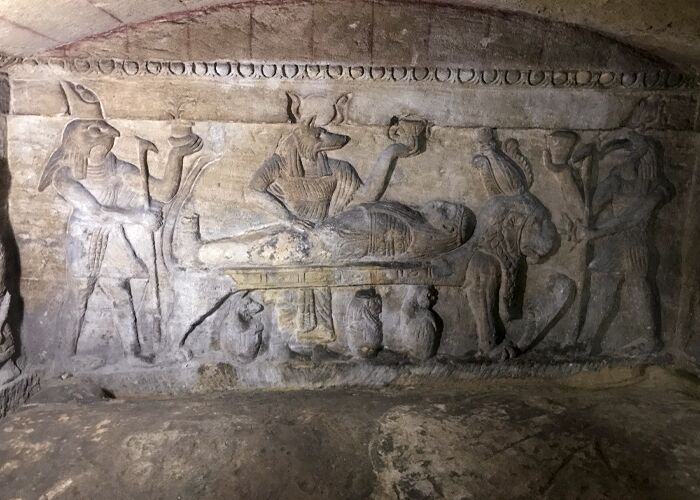Com El-underground Shoqafa’s caverns have been designated by the United Nations Educational, Scientific, and Cultural Organization as a World Heritage Site.
It’s hard to believe how beautifully preserved and intriguing the ancient Catacombs of Kom El Shoqafa are considering the variety of periods represented there.
Found by happenstance in 1900, these rock-cut tombs were discovered by a donkey that fell into a hole in the ground.
Location:
Several Roman remains from Alexander the Great’s time may be seen at Roman Alexandria, a port city three hours north of Cairo.
Located close to Alexandria’s famed Corniche, the Catacombs of Kom El Shoqafa are a must-see.
History:
The Catacombs are thought to date back to the 2nd century AD, based on archaeological evidence.
100 feet below the surface of the earth is where they’re located.
The chambers are made up of a combination of tombs and a feasting area where a deceased family member’s relatives would gather and dine in commemoration of their lost loved ones.
They included Pharaonic Egyptian, Roman, and Greek themes in their design to pay tribute to Egypt’s long history.
According to historians, academics dubbed the Hall of Caracalla after the Roman emperor who ordered the death of Alexandrian children during a review in 215 AD.
Mourners toasted the departed from stone couches in the Triclinium, where the first archaeologists uncovered wine jars and tableware.
The Central Tomb, which has a doorway guarded by reliefs of bearded serpents with Medusa heads shields and dated from the second century AD when “the old faiths began to merge and disintegrate,” includes muscular bound statues of Sobek and Anubis wearing Roan armour (Forster).
The Goddess Nemesis Hall, which is still accessible, has been submerged, accelerating the decay of the catacombs.

